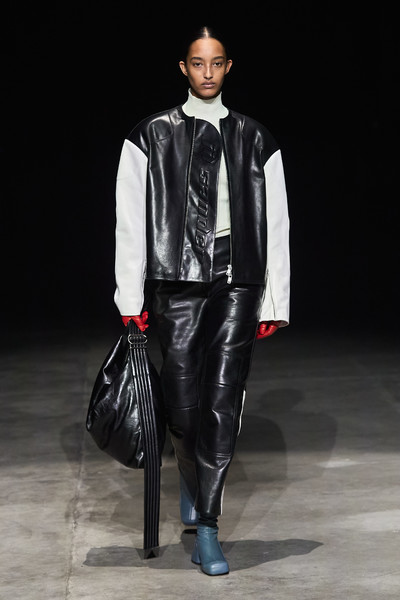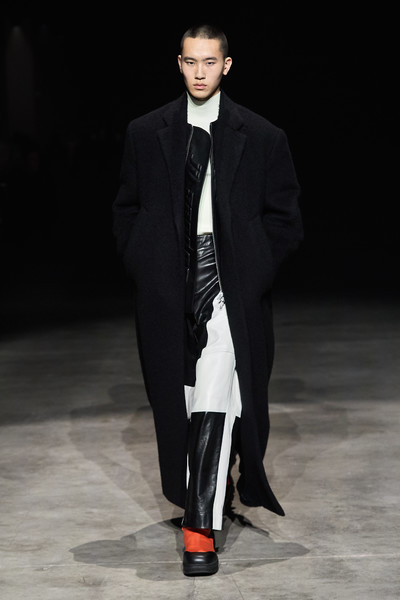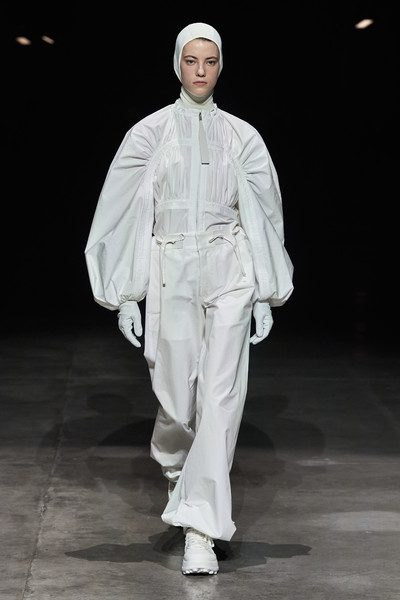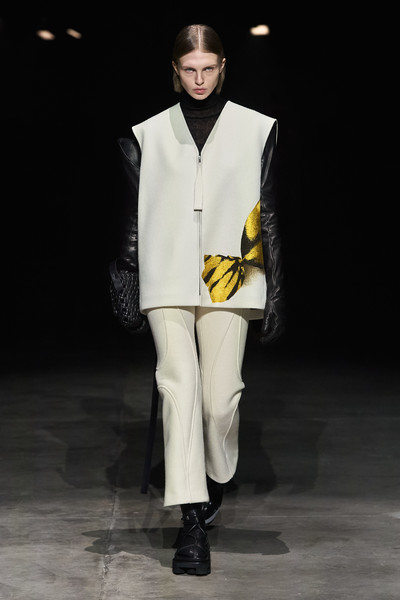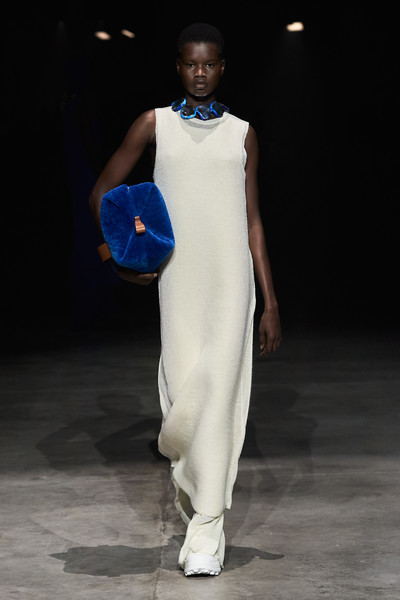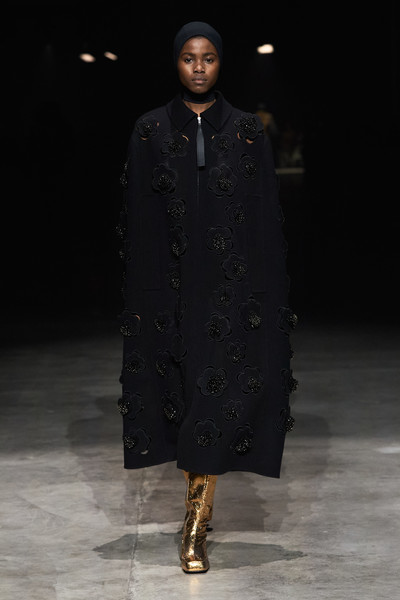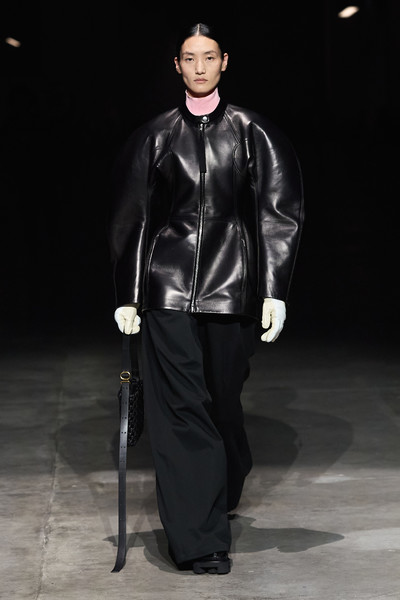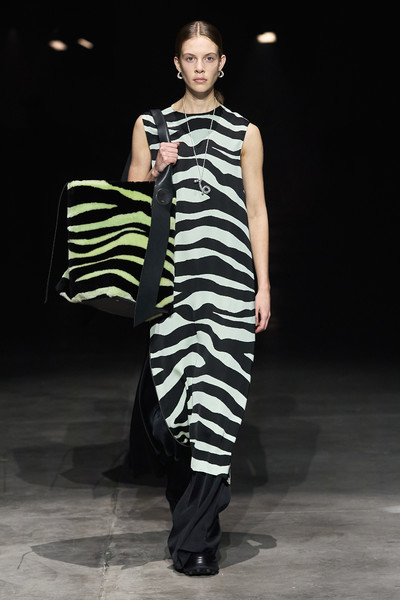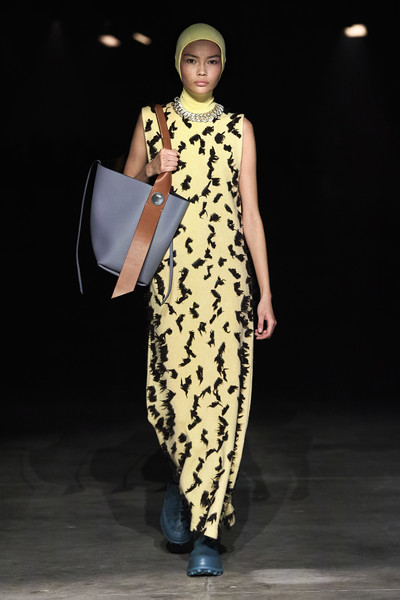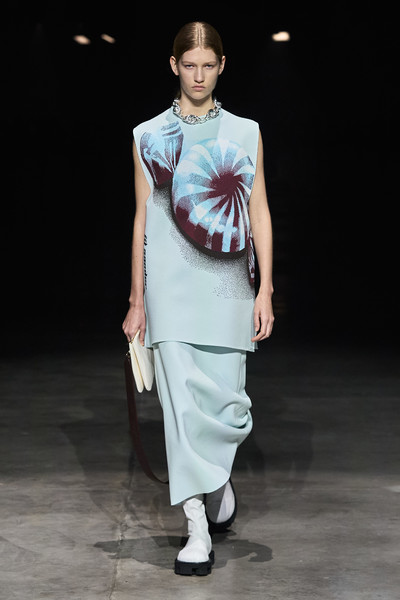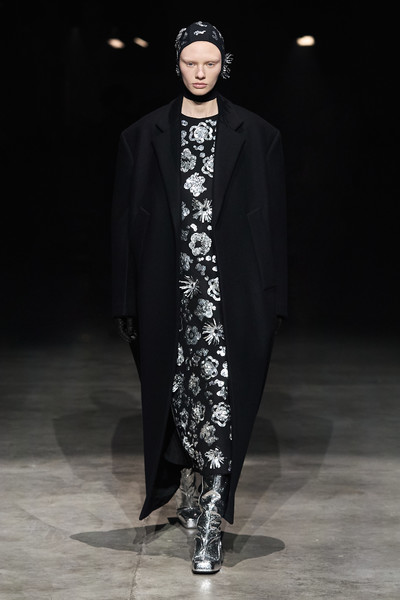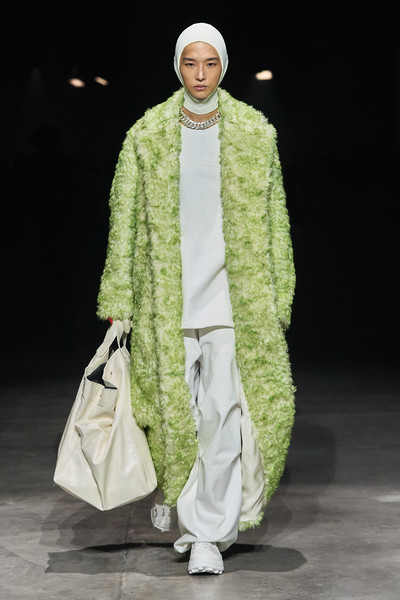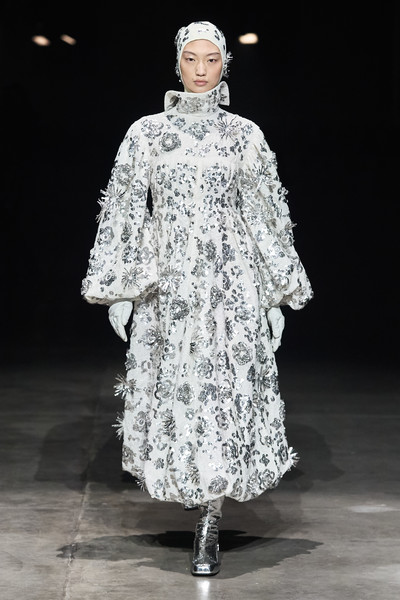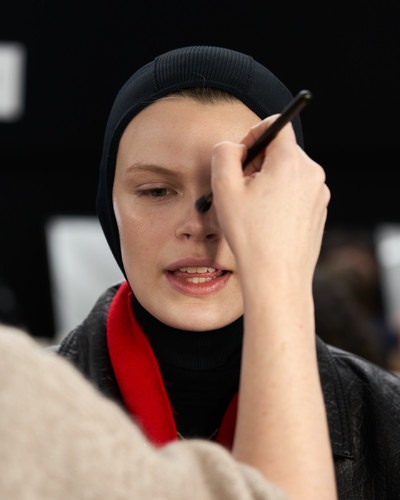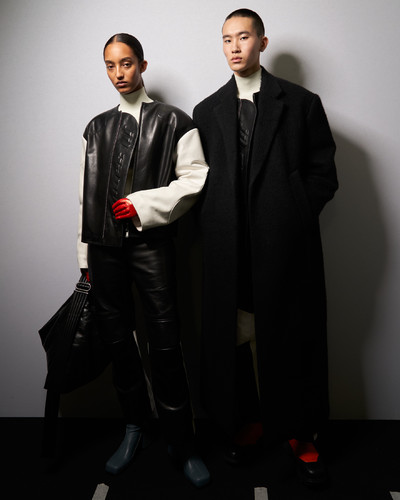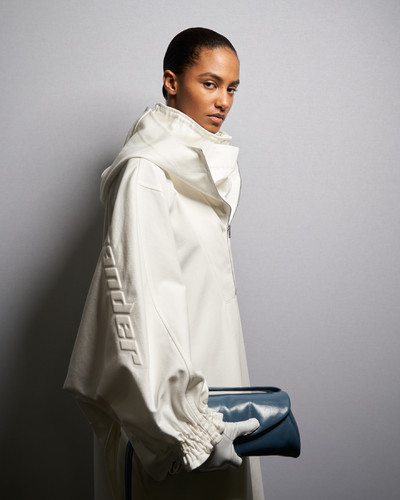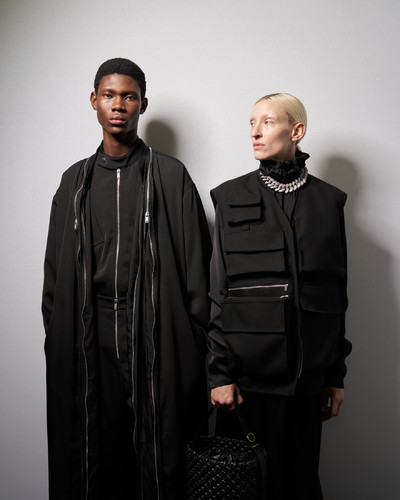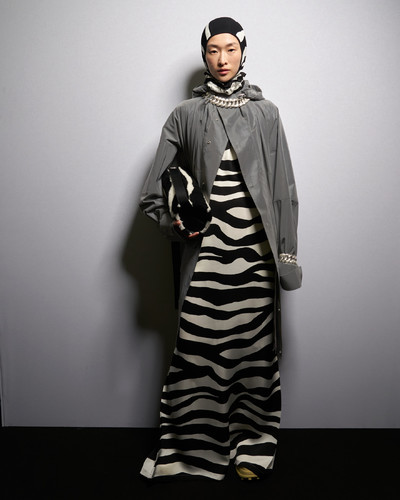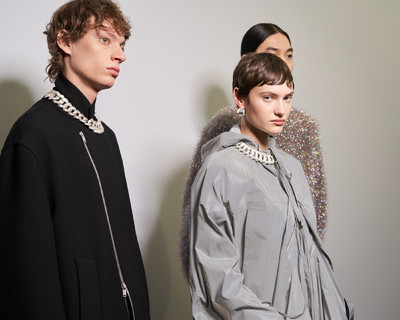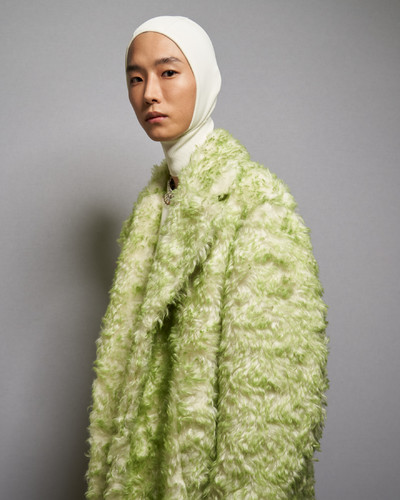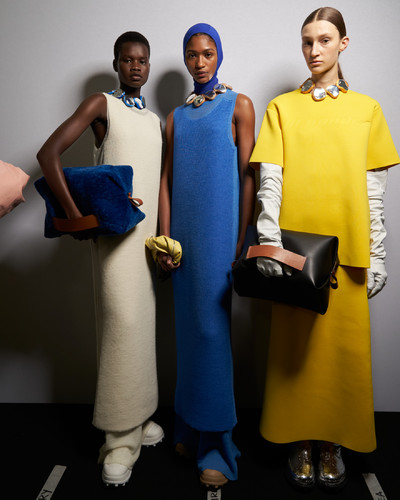For Lucie and Luke Meier, the personal is about process and purity, not shows and spectacles.
By Rahim Attarzadeh
Portrait by Jack Davidson
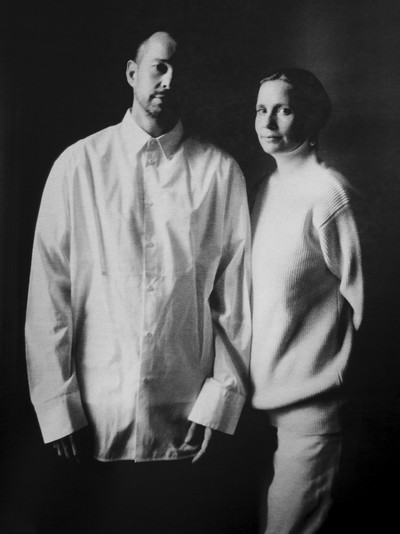
For Lucie and Luke Meier, the personal is about process and purity, not shows and spectacles.
When asked about how they were feeling ahead of their Fall 2023 show, Luke Meier judiciously responded ‘bored.’ That is not because he and his wife Lucie are actually bored but rather they have little to no time for the entertainment side of the fashion industry - or the continuously caricature nature of the extreme extravaganza that is fashion week. Having been at the helm at the long-established German house for five years, the Meiers are able to look back, look at and look on. The singular appositeness that has adhered to Jil Sander since its inception in 1968 now has an influence that feels more pluralised than the past would allow.
Debuting in the Spring of 2018, the design duo took on one of the industry’s greatest challenges at that specific moment in time - to restore order to the tempestuous balance at Jil Sander. Not an excessive excess of order as to fall into the trap of a palely imitated repetition where anthracite becomes anodyne, marl becomes monotonous and sharpness becomes soporific but rather they have established a design philosophy that combines rigour and natural elegance to create purity. In the present day, the industry has become prescient about the importance of the Meier’s radical refinement. So much so that the Italian fashion group OTB purchased the house in 2021 with a new injection of capital that has cathartically expanded the label to luxuriate in the Meier’s ability to challenge, confront and contort practicals, principles and protocol.
Now, with an increasingly relevant and meaningful Gewandtheit (German for savoir-faire), appealing to a new generation of purists and tourists, the Meiers have entrenched an unsuppressed, pioneering impact. Their drive to create what they refer to as a ‘holistic’ design world, from fabrics to accessories to flagship stores have altered the way that the label’s peripheral domains approach branding, retail, photography and art direction. Yet, through their ability to circumspectly circumference versatility and hard work, the Meiers have never wavered from their on-kilter vision. Their collections have been intemerate and flattering in their sagely wrought simplicity and intricacy. It could be said that much like the label’s eponymous founder, the Meiers’ vision will remain forever contemporary because it has always been timeless.
‘We’re not going to operate in a synthetic way just to gain attention’ says Luke and deftly so when considering the first look of their latest collection. A black and white leather monochromatic motorcycle jacket (not synthetic in the slightest) that might feel like an irreverence towards the codes of the German minimalist who founded the brand, but rather its temperate stiffness and accentuated crevices and curves feel more of a vicarious nod to a reworked and reimagined tradition of severity and consistency. Multifaceted and multi-pocketed utility vests were integrated into the collection that felt like an interspersed nod to Luke’s menswear label, OAMC. Tailoring was met with volume to give the outerwear silhouettes an eloquently expressive elegance that has transfigured the Meier’s body of work into a collectible raison d’être. There was an inclination to infuse dissident patterned dresses, embellished in populous printed metal flowers to quite literally break free of any preconceived notions surrounding the now-overused term, minimalism. Tealed and tonic coloured accessories as well as elevated commonsensical rubber-soled trek boots further aestheticised the Meier aesthetic, in-turn forging their new world order at Jil Sander. In summary, the collection adhered to a more arresting reveal of the characteristics and nuances that bind the idiosyncratic individualism the duo subtly yearn for their wearers to embrace.
System spoke with the Meiers about the endearment of their enduring influence at Jil Sander, geometries and grace notes, and why mass appeal should be kept to a bare minimum.
I would like to start by talking about fluidity in the context of fabrication and design. What does the term mean to you? You’ve often been asked about minimalism but less so fluidity. It’s not traditionally accustomed to the preconceived notion of severity and the ‘less is more’ approach when one looks at the history of Jil Sander. Would you say that draping and fluidity have become part of your approach for the Fall 2023 collection?
Luke Meier: After a tension, there is a natural inclination on our side to make things more impactful. Or a question of how we can make things more impactful. Structured tailoring and to what you are referring to as minimal will always be there but when you show that alongside something that adheres to this very delicate and fluid shape, or drape, there is this amplified behaviour. That adds to the strength of the tailoring that we opt to create.
Lucie Meier: It’s perhaps more than fluidity. I think it’s really about ease. Even if we do very strict, or sharp tailoring, there needs to be a balance between precision and ease. Nobody likes to feel as if they are being squeezed into something. That isn’t cool. For us, it doesn’t look cool. Ease is the most important component.
How do you balance that sharp, pin-point precision with the ease you are referring to, whilst still creating clothes that Luke once referred to as a ‘protective envelope?’
Luke Meier: The trick is to balance the external with the internal. It’s more of a challenge than a trick. Our collections give you a sense of this sharp and protective external appearance. But on the inside, our clothes should still move. They should serve you as functional when you’re wearing them. A lot of the wool we use is from Japan. The fabric is very specific and dry and sharp. It can be aggressive in touch. If we manage to cut and use the fabric in the right way, it should actually feel very pleasant when you’re wearing it. The strictness of the fabrics shouldn’t make you feel too stiff and restricted. There is a balance between form, function and flattery.
Lucie Meier: The structure should make you feel confident but not restricted.
‘We want the Jil Sander wearer to become an individual through our curation. You can’t achieve individuality by looking at what everyone is doing, or following, or wearing.’
In your previous collection, you mentioned that you wanted to incorporate a ‘couture attitude’. Can you expand on that for this season? Couture is not a component often associated with Jil Sander. Yet a Meier collection feels that it converts purity into prowess, making clothes for every occasion. Fabric is pushed to create volume, yet your clothes are wearable, creating this palpable reality.
Lucie Meier: It’s about volume and shape. Couture is decadent because it gives you a lot of fabric and even more shape. Our research goes into shape in order to find the right proportions. The attitude comes from being generous with volume. We aim to create these sculptural shapes, yet the discipline of the sculpture is a form of strictness, whilst making sure they feel tangible for everyday life.
Luke Meier: It’s part of the same process we go through when we were discussing sharp tailoring, fabrics and comfort. The objective is to create these couture volumes that are extremely pushed. We push ourselves as we push the fabrics. They become more extreme, yet still serve you in the real world. We want to create a decorative image at Jil Sander.
We’ve spoken about fluidity and ease in terms of your approach to design, but how does that translate on to the runway? How do you go about creating the flow of a runway show? The turning points, the climax, the relaxing parts? Because a show is an artwork, like a play on stage. Jil Sander shows used to be almost half an hour long.
Lucie Meier: That’s what we’re working on today actually.
Luke Meier: That’s a good question. I think the connection you’re talking about is meant to be more intuitive. It’s actually a very good question. There’s not really a…
Lucie Meier: Rulebook. You can make one show turn into something different. It depends on the order and the characters. It can go anyway, or any direction.
Luke Meier: That’s the ‘fun’ part of a show actually. You get to tell a narrative. It’s the same reason as to why we love print media. You’re documenting what’s coming next in an order as opposed to having hyperlinks online where people jump around schizophrenically. Nobody will have the same opinion on what they just saw over the last hour. If you present that in a magazine, or a book, page one to two hundred, it’s an ordered concept. Once somebody has gone through that process, you want them to understand the overarching mood. It’s not about what’s on page forty-seven. We want the show to feel holistic.
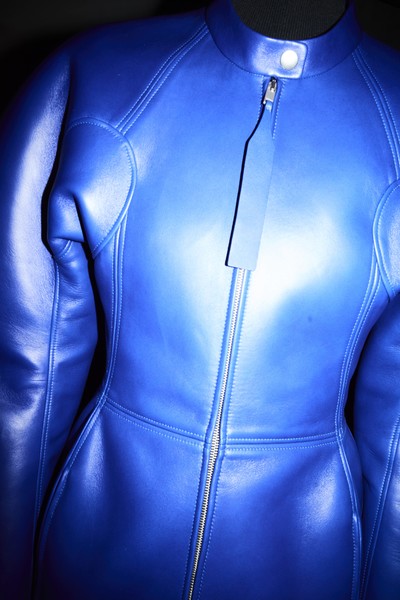
Process imagery courtesy of Jil Sander.
‘Our collections give you a sense of this sharp and protective external appearance. But on the inside, our clothes should still move.’
Luke, you mentioned that you and Lucie want to create a ‘decorative image’ at Jil Sander. Accessories, especially brooches have become part of the regularity to your work. In its inception years, the brand had such little decoration, where the focus was more on the model. Is glamour and decoration something you go about incorporating into each collection? We spoke about the couture components. The designer Anthony Price once told Alexander Fury for System that ‘glamour rarely comes out during the day’ but it certainly does through your vision for Jil Sander. How do you poise glamour with function?
Luke Meier: I think of accessories as more of a function. Although that is not how we typically accustom decoration, I think at Jil Sander, decoration has to serve as function. We enjoy making jewellery as it’s very pleasant to work on in conjunction with the ready-to-wear. It elevates the overall image, the overall character and the overall aesthetic.
Lucie Meier: I think accessories can really change an outfit. They allow the wearer a freedom of customisation and simply a freedom of how to wear the clothes. Whether you want to make our accessories very evening or very daytime, that choice gives you that freedom to play with the clothes. I think they really complete the look.
The accessories and jewellery feel like a nod to the notion of individuality. The criterion of fashion today is based more on modernity and the individual. Clothes are created for characters and the versatility of each character, where the 90s uniform aesthetic is no longer a necessity. How does glamour relate to timelessness, stylishness and the decisiveness you need to undertake in order to execute each collection pragmatically? Pragmatism is a term I’d associate with a Meier collection.
Luke Meier: I think in the case of glamour and the individual, it’s about giving yourself an edge, or an advantage by surrounding yourself with beautiful things and beauty in general. We don’t just look at something like a handbag as inherently glamorous. It also serves a purpose. Our aim is to alter the premeditated notion that just because something is functional, that doesn’t mean it can’t be beautiful. The disparity between beauty and function should not feel so pronounced. Function should never eradicate what can be beautiful.
Accessories, colours, shapes and patterns have pushed things on the runway for your collections. What are the other ways you incorporate to give your collections an edge, or to quote Lucie, to ‘complete the look?’
Lucie Meier: (Laughs) The shoes as well. They change the attitude of the look and therefore the outfit. There is a lot of power in accessories.
‘If people like what we do, we’re happy to have them present. I like to think and hope we are still far away from mass.’
Would you say that accessories add to the architectural approach at Jil Sander? Not for reasons of maximalism, but to show the power of the brand. Does the architectural formation of the accessories allow the clothes to breathe and have space? They have an identity of their own.
Luke Meier: For us, accessories can be liberating. You aren’t so worried about the body form as they are their own object. When you mentioned architecture, that’s exactly what it is. Considering the proportions of objects and how they relate to the wearer and lifestyle. Yet they act on their own. The accessories at Jil Sander don’t complete the look, they are their own look. They have their own identity. It’s enjoyable to work towards building that identity.
During your Spring Summer 2018 debut collection, you said that Jil Sander will be ‘soulful’ and ‘relevant.’ Fast forward to present day since being at the helm for over five years, do you think you have achieved that?
Lucie Meier: Absolutely! I think our collections are so cool and I think they’ve garnered relevance over time.
I thought that was the biggest challenge at the time for any designer. To take on the rigid discipline of a house with the heritage of Jil Sander and come out on top. Through all of the label’s ups, there were downs, and there were times where the future of Jil Sander was questionable, even doubtable. So, with the parameters of fashion constantly shifting, how do you think you have remained a constant over the years? Do you even care for such parameters and what can be forced change at times?
Luke Meier: I think we aren’t able to do or create anything outside of what we deem interesting, or relevant, or relatable. It’s difficult to remove the personal from any of the work. The collections are an extension of ourselves. I don’t know if we are in-tune with any of the trends that are currently happening, or what people are interested in, or what they like. I don’t compare what we think is relevant to what others think is relevant. It’s never a question of finding out what people are into. I’ve never asked: ‘What is that person wearing?’ It’s more a case of: ‘We think this is cool. Let’s build towards it.’
Lucie Meier: Our vision is our intuition. We want the Jil Sander wearer to become an individual through our curation. You can’t achieve individuality by looking at what everyone is doing, or following, or wearing.
Would you say that the notion of individuality is still a focus today? In the 90s, we know about the period associated with minimalism and how that birthed the individual at Jil Sander. The moment in fashion arrived rather late, considering that in architecture and product design, the Bauhaus spirit had been around for 80 years prior. Is that still present? Individuality and minimalism in a meticulous sense, not as a marketing term, or a buzzword to sell a collection? It is commonly misunderstood how many processes form the structure of minimal garments, so that minimalism is maximised and maintains shape.
Luke Meier: The essence of it is present but lacks execution. I think the consumer still responds to things that are well made, that don’t need this superfluous bunch of extras. I like to think we still respond to purity. That ideology doesn’t follow trends or seasons. Jil Sander is as much an approach to lifestyle as it is fashion and design. In fact, more so.
So, purity is lacking nowadays?
Lucie Meier: I would say so, yes. It’s lacking in touch.
‘Our aim is to alter the premeditated notion that just because something is functional, that doesn’t mean it can’t be beautiful.’
You’re carrying the mantle when it comes to purity. You are the definition of under-the-radar designers. A ‘designer’s designer’ so to speak. Is the notion of creating ‘silent beauty’ something that has been pivotal in your work? Something that gives your collections a voice and enables the clothes to talk so you don’t have to?
Luke Meier: In a certain sense, I don’t think it’s by design. We have always been this way and the public chooses to…
Lucie Meier: Make us seem that way.
Luke Meier: We’re also not trying to please the mass. Again, it goes back to what we were saying about the persona and being intuitive, rather than trying to tick any boxes and make sure the high street is really into what we’re about.
The high street doesn’t really encourage individuality. It’s a sartorial take on George Orwell’s 1984. As we know, Jil Sander herself is an uncompromising designer. It goes back to severity but beyond fashion design and to what Luke refers to as lifestyle. Despite showing more variety during your tenure, what have you remained uncompromising on? Is it not wanting to engage in the now more mass-appeal at Jil Sander through the celebrity attendees at your shows, or the craving of products that are predominantly media driven, that only appear interesting in the digital world?
Lucie Meier: We’re not trying to be exclusive. If people like what we do, we’re happy to have them present. I like to think and hope we are still far away from mass.
Luke Meier: We don’t compromise in the way we do our thing. If people happen to like it, that’s great. If people want to come into our world, that’s great. We’re not going to operate in a synthetic way just to gain attention. If it happens, it has to happen organically so people can really understand our clothes and want to wear our clothes for themselves, not because it has mass appeal.
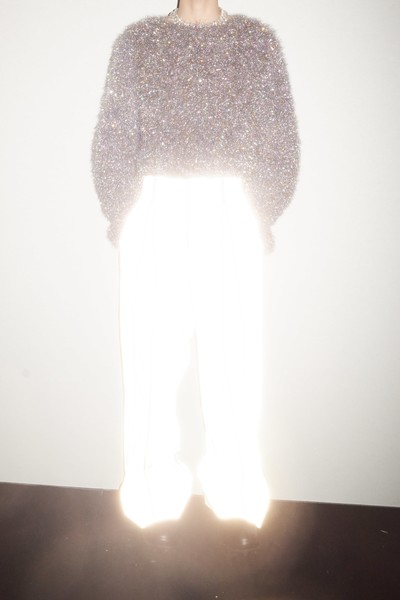
Process imagery courtesy of Jil Sander.
